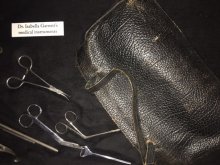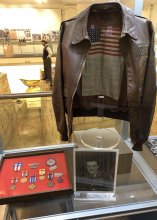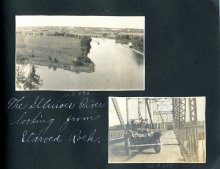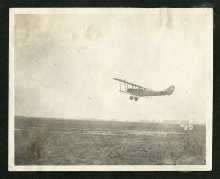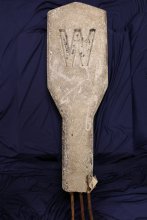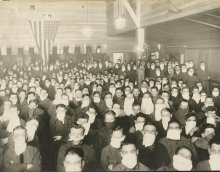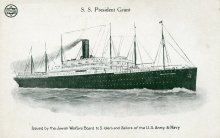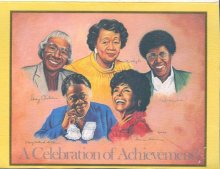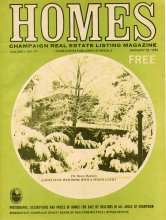Modern Era (1917-present)
The state’s Modern Era has been one of continued growth and change. Following World War I and the nation’s greatest economic collapse, public works projects of the New Deal put people to work on civic projects, such as building roads and infrastructure, and brought history to life by protecting a number of historic places around the state. The Federal Arts Program of the W.P.A. paid artists to create paintings, prints, sculptures, and murals for civic beautification, pride, and capturing the moment. Beginning in 1941, the state’s agricultural and manufacturing sectors and the sacrifices of citizen-soldiers played an important role in making the United States a leader on the world stage.
Isabella Garnett was born in Evanston in 1872 and received a nursing degree from Provident Hospital and Nurses Training School in 1895. She later graduated with a medical degree from the College of Physicians and Surgeons (now the University of Illinois College of Medicine) in 1901, making her one of the first female African American physicians in Illinois.
At the age of 21, Joliet native Ray Keenan was drafted into WWII. He was a nose gunner and bombardier in the 9th Bomb Squadron, 7th Bomb Group, 10th Air Force, flying bombing missions out of India in a B-24 Bomber.
The Nina Chesebro photo scrapbook includes highlights from a road trip on September 17, 1916, to Starved Rock State Park near Oglesby, Illinois. This page shows a group of friends in a 1914 Model T Touring Car overlooking the Illinois River. The scrapbook holds over 110 images from 1914 through 1918.
On July 18, 1917, flight training began at Chanute Field in Rantoul, Illinois. For the next 76 years, Chanute was a fixture in Champaign County, trading in flight training to become a major technical training installation for the United States Air Force. This image shows a Curtiss JN-4 “Jenny” biplane just over the open expanse of Chanute's flying field.
A whistle post was installed along a railroad line about a quarter mile before a road crossing. It signaled the engineer to sound the train locomotive's horn, or whistle, as a warning that the train was approaching the crossing.
This Kellogg 500 model gold-colored telephone commemorated the 1000th telephone of this type sold by the Champaign Telephone Company in 1968. The Kellogg 500 model first sold in the 1940s and remained popular for nearly half a century. Its unique features are the square body and placement of the numbers and letters outside the dial.
In 1918, a Spanish influenza pandemic swept the world, the deadliest in human history. This photo, from the Stanley B. Evans scrapbook, was taken in the YMCA at Rantoul's Chanute Field in 1918. The handkerchiefs worn over the face, some rather jauntily, were an attempt to stop the spread of the disease.
The S.S. President Grant was originally a commercial ocean liner. It was seized by the U.S. government during World War I and officially recommissioned the U.S.S. President Grant. This postcard was issued by the Jewish Welfare Board to soldiers sailing home aboard the S.S. President Grant. Following the signing of the armistice, the ship brought over 37,000 people home to the United States.
The Doris K. Wylie Hoskins Archive for Cultural Diversity documents the African-American experience in Champaign County and east central Illinois. Doris Wylie Hoskins amassed this valuable resource throughout her life. This greeting card, published by the National Council of Negro Women, was sent to Doris’ daughter on her birthday in September 1995.
Published January 22, 1973, this magazine’s cover features a wintertime photo of the Busey mansion. Inside, it includes a description of the extravagant home and a brief history of the Busey family. The mansion was shortly thereafter demolished.
Pages






